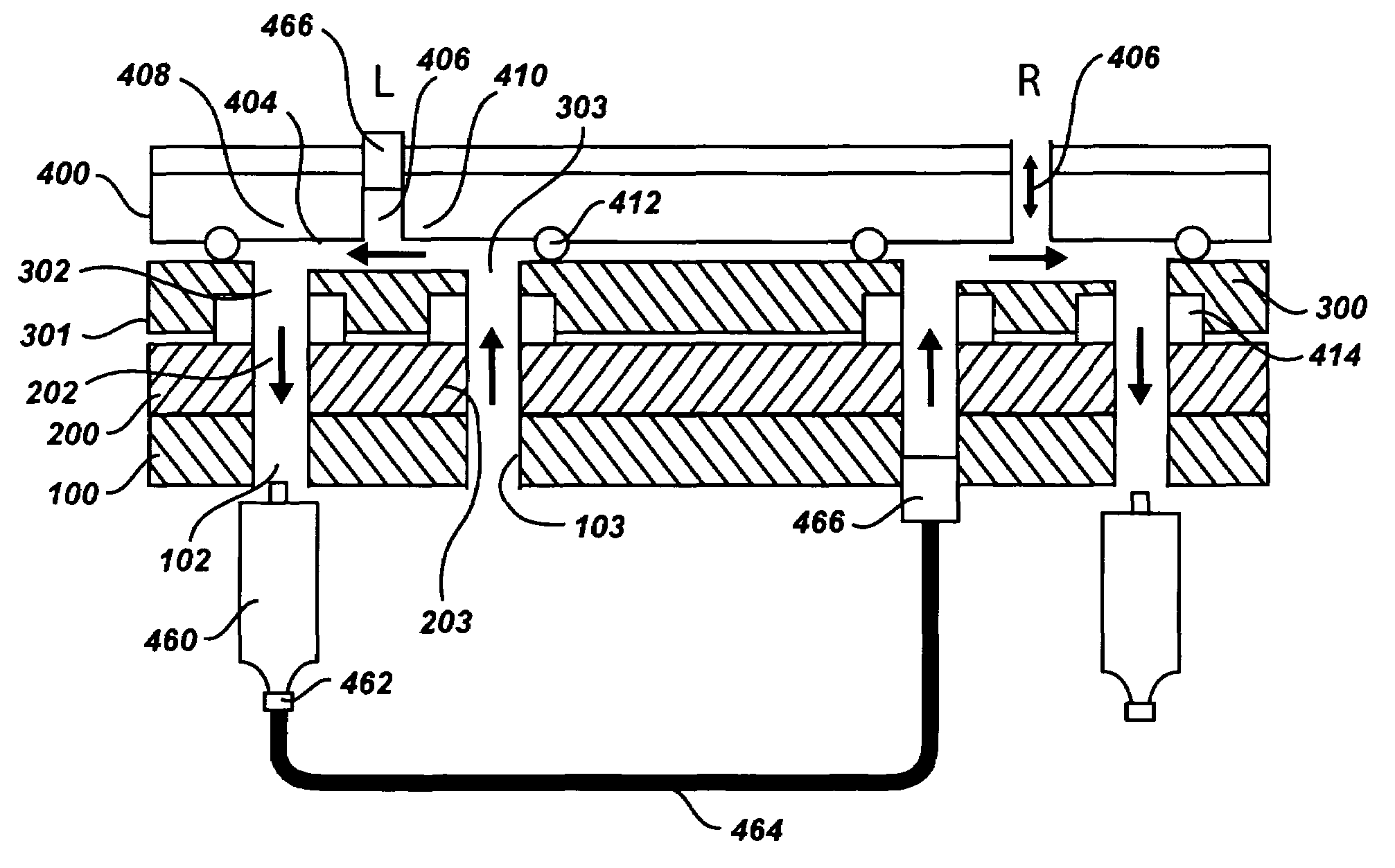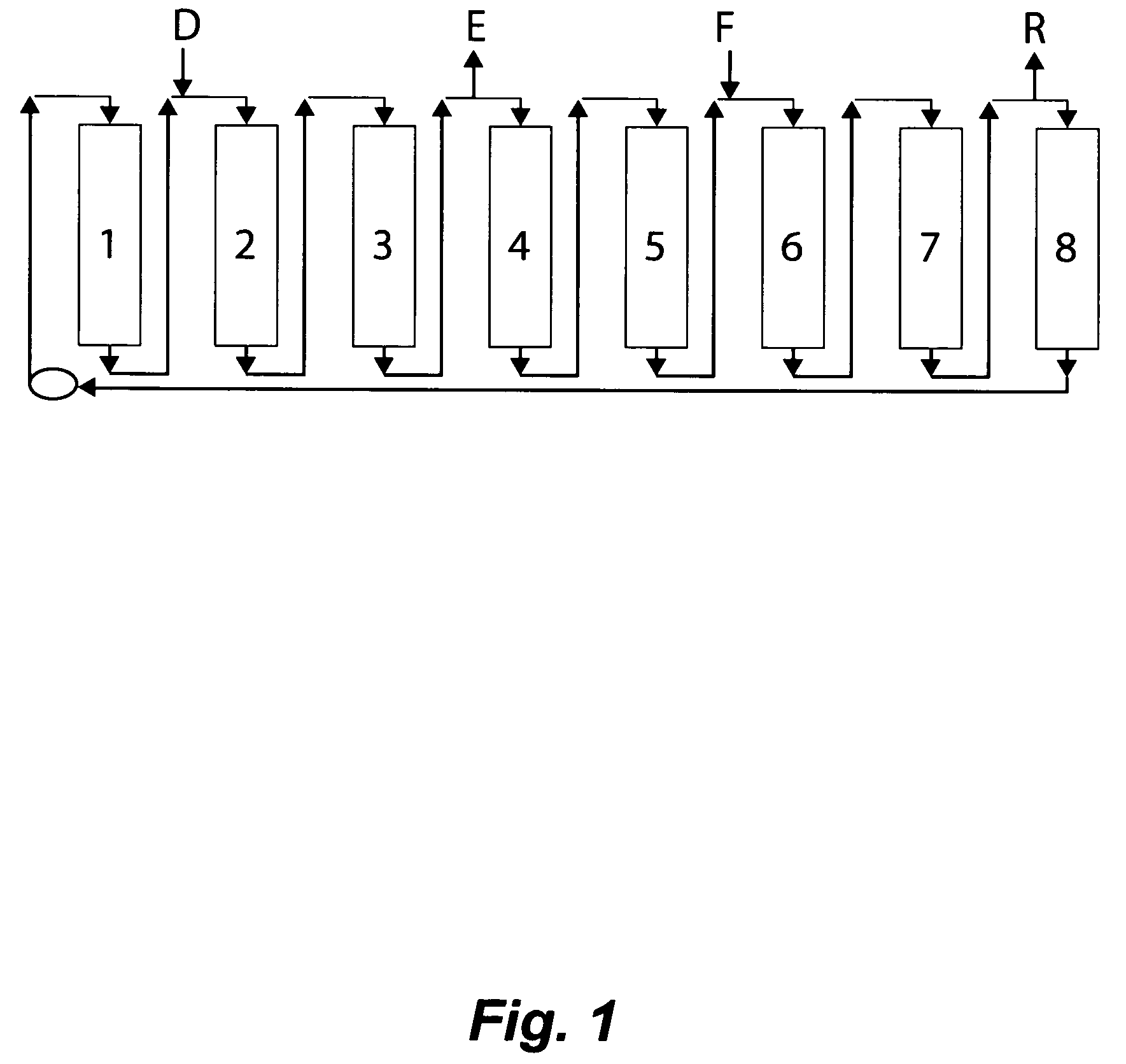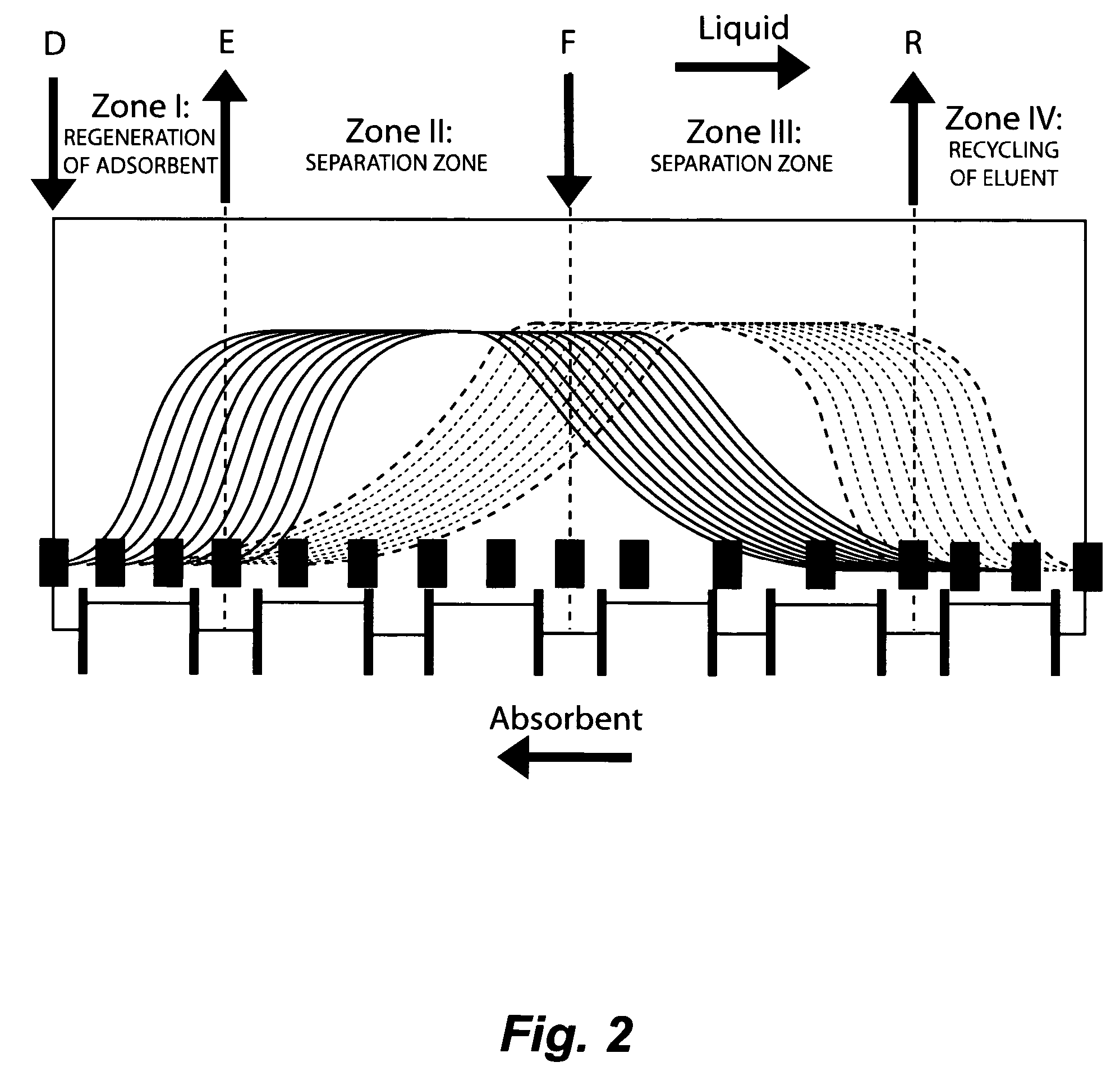[0014]Most simulated moving bed (SMB) chromatography systems are designed for large scale industrial applications involving thousands of gallons of feedstock, and tons of final product. Flow in such systems is highly constrained because of the necessity of maintaining continuous flow of large volumes of liquid in each stage of the process. Small scale systems are not nearly so constrained in part because perturbations in flow are more readily tolerated when circulating flow volume is small compared to bed volume in the columns. It is therefore an object of the present invention to interrupt flow in the series at critical points where inflows and outflows from the system to prevent any possible unintended contamination of columns adjacent to the points of fluid ingress or egress, as will become apparent hereafter.
[0015]The key to efficiency of SMB in which each column in the series alternately performs a succession of chromatographic functions, is the valving system. The multi-port rotary valve of the present invention is designed for simplicity of construction, ease of assembly and disassembly, and minimization of wear on the moving parts. In one embodiment, the present valve comprises three substantially flat plates, and in a second embodiment four such plates, maintained in alignment. The bottom plate and a rigid plate composed of a fluorocarbon polymer attached to it are mounted on a frame or carousel, and rotate against an interfacing plate. Each of these structures has a plurality of bores arranged in two concentric arrays of equal number corresponding to the number of potential liquid flows with each outflow from one column connected to only one inflow of the next column in succession. The rigid plate has a lapped surface to a flatness tolerance of not greater than 15 microns, and preferably 1-3 microns, and can readily withstand up to 500 psi and 500 ft. lb of torque. All of the bore arrays are arranged to be in unobstructed alignment when the valve components are layered together. Means are provided to apply uniform pressure across the plates so as to attain a hydraulic seal able to withstand pressures of up to 200 psi.
[0016]The stationary interfacing plate similarly has two concentric arrays of bores corresponding in alignment to the bores of the first and rigid plates. The outer portions of these bores are partially threaded to receive connectors for attachment of cross-over conduits interconnecting one column to the next in the series. On the undersurface of the interfacing plate each array of bores is surrounded by a continuous concentric recess whose cavities are designed to receive a fabric entrained gasket. The gasket has holes corresponding to the position and size of the bores in the recess that receives it. The gasket is further made of material thicker than the depth of the recesses, so that when the valve components are assembled, the gasket provides not only sealing engagement between the rigid plate and the interfacing plate, but also reduces the coefficient of friction, and correspondingly the area of wear on the moving parts. It is also advantageous that the gasket is held in place mechanically without use of any chemical adhesive, to facilitate periodic replacement.
[0020]An upper support plate is joined to the plurality of outer pillars and has a central aperture and bearing means to receive the upper most portion of the central shaft rising vertically from the inner frame base plate. The purpose of the outer frame is to maintain vertical alignment of the shaft and provide overall lateral stability. The central shaft is further characterized in having threads in the portion of shaft between the interfacing plate of the valve assembly and the outer support frame plate, Pressure sufficient to achieve sealing engagement of the valve components is obtained by exerting pressure on the interfacing plate of the valve by compressing a spring disposed between the interfacing plate and a threaded push plate held in place by a lock nut.
[0022]The method of the present invention can be used in any SMB of generic construction, in which the volume of liquid flow in the system is small enough not to result in large pressure spikes and depressions, or result in other fluid effects such as water hammer, rupture of conduits and fittings, and the like when interrupted at one or more points in the circulation loop for the time a columns remain in one index position. According to the method, flow is interrupted by interrupting means to any one of two positions occurring in a column immediately downstream from either or both of the inflows of feedstock or desorbent, and optionally interrupting the flow to columns upstream of the outflows of raffinate or extract. In practice, such interruption of flow prevents cross-contamination of columns adjacent to inlets and outlets, thereby sharpening the peaks of separation and optimizing recoveries of product. It is especially adaptable to very small SMB systems useful in drug discovery and separation of highly structurally related chemical compounds.
 Login to View More
Login to View More 


